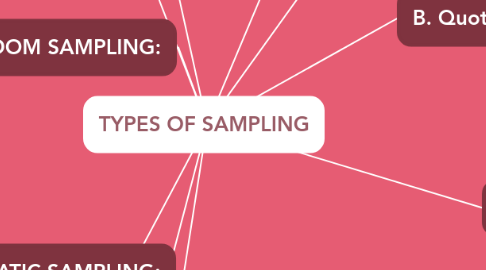
1. the researcher divides the population into smaller groups that don’t overlap but represent the entire population.
1.1. For example, a researcher looking to analyze the characteristics of people belonging to different annual income divisions will create strata (groups) according to the annual family income. Eg – less than $20,000, $21,000 – $30,000, $31,000 to $40,000, $41,000 to $50,000, etc. By doing this, the researcher concludes the characteristics of people belonging to different income groups. Marketers can analyze which income groups to target and which ones to eliminate to create a roadmap that would bear fruitful results.
2. SIMPLERANDOM SAMPLING:
2.1. Each individual has the same probability of being chosen to be a part of a sample
2.2. For example, in an organization of 500 employees, if the HR team decides on conducting team building activities, it is highly likely that they would prefer picking chits out of a bowl. In this case, each of the 500 employees has an equal opportunity of being selected.
3. PROBABILISTIC:
3.1. This sampling method considers every member of the population and forms samples based on a fixed process
3.2. For example, in a population of 1000 members, every member will have a 1/1000 chance of being selected to be a part of a sample. Probability sampling eliminates bias in the population and gives all members a fair chance to be included in the sample.
4. Probabilistic Sampling (Representative sample)
4.1. RANDOMLY
4.2. attributed to the population
5. SYSTEMATIC SAMPLING:
5.1. the systematic sampling method to choose the sample members of a population at regular intervals.
5.2. For example, a researcher intends to collect a systematic sample of 500 people in a population of 5000. He/she numbers each element of the population from 1-5000 and will choose every 10th individual to be a part of the sample (Total population/ Sample Size = 5000/500 = 10).
6. STRATIFIED SAMPLING
7. Non-probabilistic Sampling (Not representative sample
7.1. CONVENIENCE
7.2. COMFORT
7.3. CAN REFER TO SAMPLE
8. A. Convenience sampling
8.1. This non-probability sampling method is used when there are time and cost limitations in collecting feedback.
8.1.1. For example, startups and NGOs usually conduct convenience sampling at a mall to distribute leaflets of upcoming events or promotion of a cause – they do that by standing at the mall entrance and giving out pamphlets randomly.
9. B. Quota sampling
9.1. the selection of members in this sampling technique happens based on a pre-set standard. In this case, as a sample is formed based on specific attributes, the created sample will have the same qualities found in the total population. It is a rapid method of collecting samples.
9.1.1. For example, a cigarette company wants to find out what age group prefers what brand of cigarettes in a particular city. He/she applies quotas on the age groups of 21-30, 31-40, 41-50, and 51+. From this information, the researcher gauges the smoking trend among the population of the city.
10. C. Judgement sampling
10.1. Researchers purely consider the purpose of the study, along with the understanding of the target audience.
10.1.1. For instance, when researchers want to understand the thought process of people interested in studying for their master’s degree. The selection criteria will be: “Are you interested in doing your masters in …?” and those who respond with a “No” are excluded from the sample.
